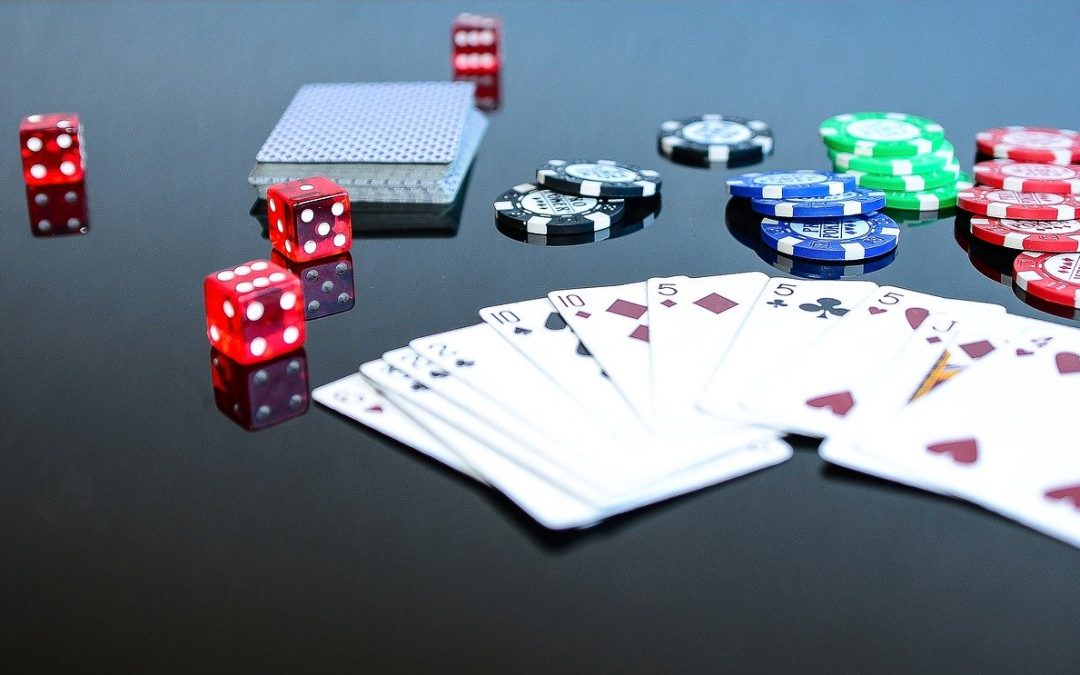The Germans played a bluff game called “Pochen” as early as the fifteenth century. It was then adapted into a French version known as “Poque,” which was eventually introduced to New Orleans and played on Mississippi riverboats.
The game was subsequently refined in the 1830s and became known as poker. An important guideline concerning pulling cards to strengthen the hand was adopted during the Civil War. Stud Poker, a variant, arose about the same period. There are hundreds of different poker variations, and the game is played not just in homes but also in many poker rooms at well-known casinos. Poker can be played for pennies or matches in a casual setting or thousands of dollars in a professional one.
Poker is a game of chance, but it also demands amazing skill, and each player is the master of their fate.
PACKAGING
Uses a conventional 52-card deck, with one or two wildcards thrown in. Poker is a single-pack game, but to speed up the game, almost all clubs and games played by the greatest players now employ two different colored packs. The other package is shuffled and prepped for the next trade once one is split. The following is the technique for the two packs: The previous dealer gathers all of the cards from the packs he has dealt, shuffles them, and sets them to the left while the transaction is in progress. The mixed lid is handed to the next dealer when it’s time to make the next deal. In games with two packs, the opponent to the dealer’s left slices the pack rather than the opponent to the right.
Clubs are known for routinely changing cards and allowing all participants to claim new cards at any moment. When new cards are released, both packs will be changed, and the new decks’ seal and cellophane wrapping will become visible to all players.
SCORING / CARD VALUES
There are several formats to choose from for poker, but a player who understands the values of poker hands and betting rules can play any poker game with ease. A poker hand consists of five cards, except for a few game variations. Combinations of several poker hands are ranked from highest to lowest, with five of the five categories (highest) and none (most subordinate):
Five of a Kind: This is the best possible hand, and it can only happen in games with at least one wild card, such as a joker, two one-eyed Jacks, or four deuces. Four tens and a wild card, or two kings and three wild cards, are examples of the five species.
Direct Flush: This is the best possible hand when utilizing only the normal deck and no wild cards. A straight flush comprises five identical cards, such as 10, 9, 8, 7, and 6 hearts. For a single suit, the highest straight line is A, K, Q, J, and 10, and this combination is known as Royal Flush or Royal Flush. The chances of splitting this hand are roughly 650,000 to one.
The next highest hand is the four of a kind, right below the straight flush. Four aces or four threes are two examples, and it makes no difference what the Fifth, Unrivaled Card is.
Full House: A full house comprises three cards of one suit and two cards of the other suit, such as three 8s and two 4s or three aces and two 6s.
The suits are five cards, all of the same case, but not all in a row. Q, 10, 7, 6, and 2 clubs are examples.
Five cards in a row; however, not all are the same. 9, 8, 7, 6, 5, 9, 8, 7, 6, 5, 9, 8, 7, 6, 5, 9, 8, 7
Three of a Kind consists of three cards of the same value plus two more cards, each with a different location, for as three sockets, seven, and four.
Two Pairs: This hand includes a pair of the better of one and the other and any fifth card of a different rank, such as Q, Q, 7, 7, 4, etc.
One Pair: There is only one pair in this thick hand, and the other three cards are of varying ranks. 10, 10, K, 4, and 3 is an examples.
There is no pair in this extremely frequent hand. There are no pairs among the five cards, nor are they all of the same suit or consecutive. When more than one player does not have a team, the hands are ranked according to the highest card in each, with the ace-high hand winning the king-high hand, and so on.
Because suits have no relative role in poker, two identical hands, card to card, are tied. In this situation, the pot is shared evenly between the players. If two hands have the same high pair, the winner is determined by the card of the next hand. For instance: 9, 9, 7, 4, 2 strokes; 9, 9, 5, 3, 2 strokes; 9, 9, 5, 3, 2 strokes; 9, 9, 5, 3, 2 strokes; 9, 9, On the fifth card, two hands with identical pairings are also determined. Consider the following scenario: Q, Q, 6, 6, J is the winner with Q, Q, 6, 6, 10.

